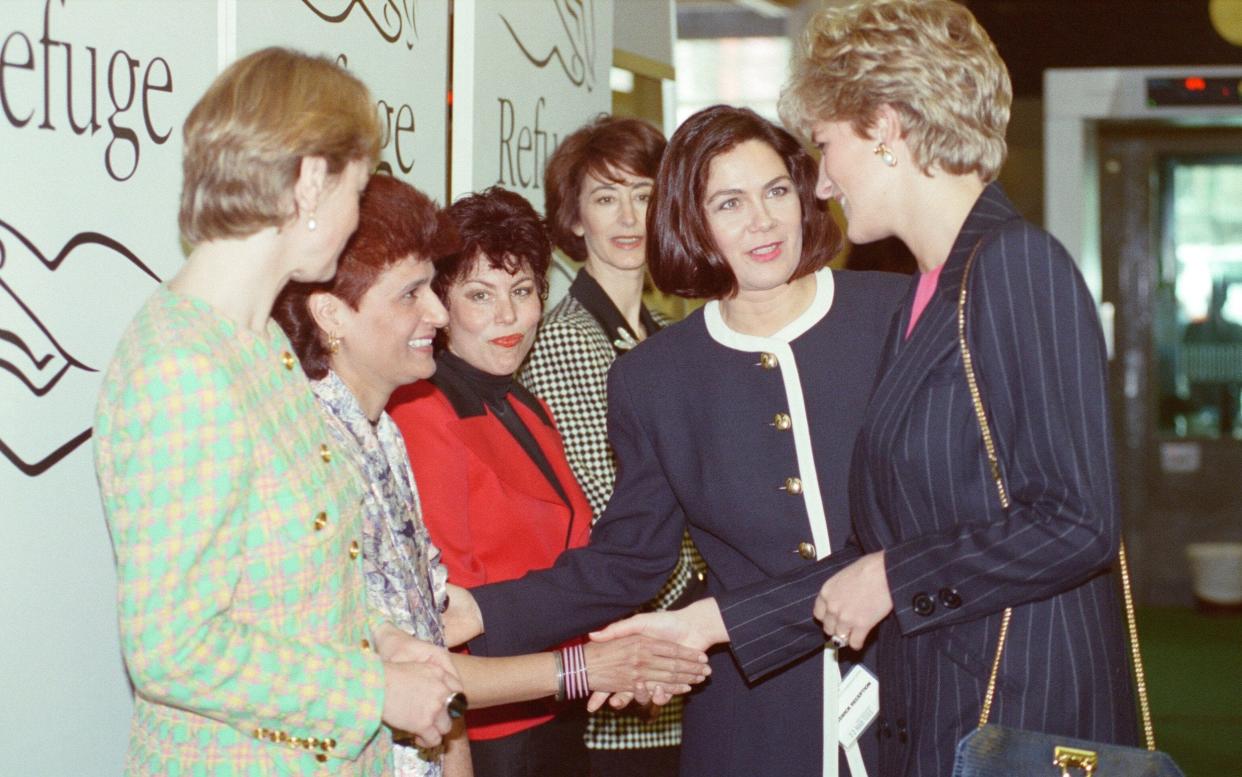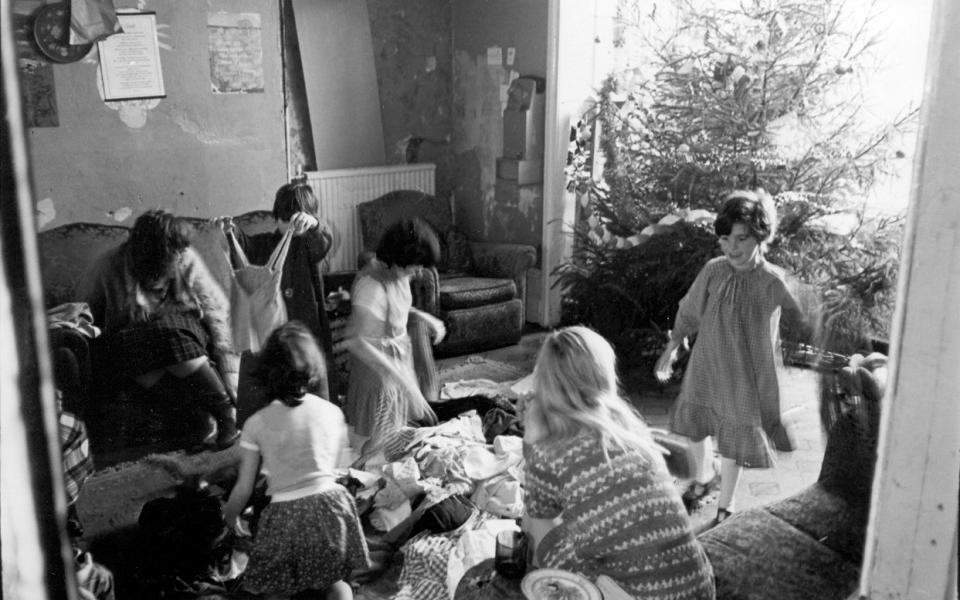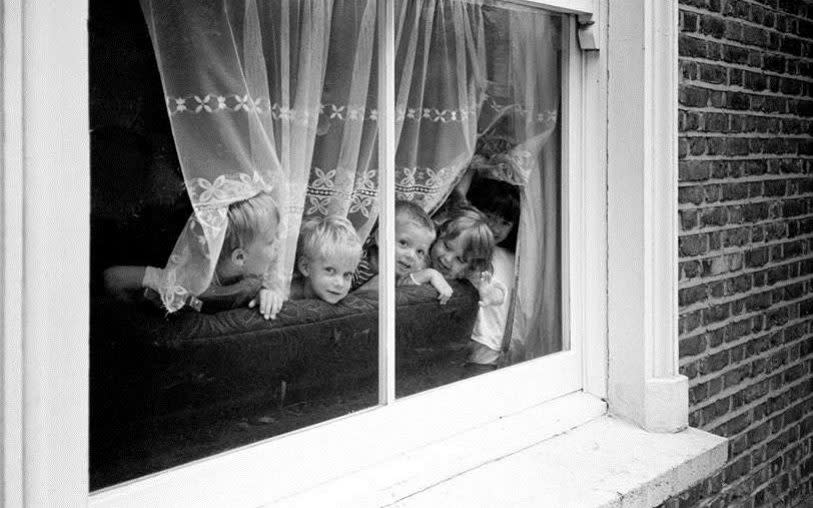'They said women enjoyed violence and were to blame for their own abuse'


The year was 1972 and Barbara had left her husband for what she hoped was the final time. By that stage the violence and abuse suffered at his hands had become a constant torment but when he attacked Fiona, their then two-year-old daughter, she knew she had to escape.
Barbara gathered up a few bags, Fiona and six-month-old Matthew, and fled their home in Edinburgh with their bus fares borrowed from her mother. They ended up being directed to a crumbling Victorian terraced home in Chiswick, West London, which had opened the previous year as the world’s first safe house for women and children escaping domestic violence.
Barbara, 75, who lives in the Scottish Highlands, still vividly remembers the chaos of the refuge and the dozens clustered inside who had similarly managed to flee their abusers.
Each night she and Fiona bedded down on a shared mattress – which during the day was piled against the wall – sleeping side-by-side with strangers. Somebody had also donated a cot, which was given to Matthew. “I remember it felt good,” she recalls. “For once in my life it seemed like somebody else understood what we were going through. And I felt safe. I knew he wouldn’t find me.”
That cramped, dilapidated building was the beginning of Refuge, which the Telegraph is supporting in this year’s Christmas charity appeal. Over the course of what is approaching 50 years, the charity has grown to support more than 7,000 abused women and children on any given day. As well as operating a network of refuges and specialist services across the country, the charity also runs the 24-hour National Domestic Abuse helpline.

Sadly, its services have never been so in demand. In the latest Office for National Statistics figures released this month, police recorded 259,324 offences flagged as domestic abuse-related from March to June 2020 – a seven per cent increase on 2019 and an 18 per cent increase on 2018. This means domestic abuse has risen to account for a fifth of the police’s workload, with two offences committed every minute.
Back in the Seventies, the abuse Barbara was subjected to wasn’t even considered a crime. Despite what was called “wife beating” being made illegal in the Twenties, the criminal justice system – and wider society – continued to view domestic violence as a private matter.
Barbara recalls reporting her husband to the police on numerous occasions but failing to solicit any interest among officers. Sometimes when he was attacking her and the screams could be heard by neighbours through the paper-thin walls of their council home, officers would attend, take her husband for a walk around the block and then simply let him back into the house.
Victims then were referred to as “battered women” and regarded as somehow culpable in their suffering. As Barbara points out of that throwaway phrase today, “battered makes me sound like a fish”.
When she first met the man who would become her husband at a party in Perth in 1967, there was no indication of what lay beneath. The daughter of a private school teacher, Barbara describes herself as exceptionally naïve and swept away by this exciting new love interest. His violent nature first started to surface after he had been drinking – especially spirits. “It made me grow up very quickly,” she says. “It surprised me people could be like that.”
In those early years there were many, many others who also turned up to the Chiswick refuge as a place of last resort. In 1983 Sandra Horley, who recently retired as chief executive of Refuge started work in Chiswick as the director of the safe house (and the only paid member of staff).
“I cannot tell you how shocked I was by the conditions,” she recalls. The house, she describes, as a “deathtrap” with holes in the walls, cockroach and rat infestations and a kitchen that broke every environmental health regulation in the rulebook.

At times around 100 women and children could occupy the eight-bedroom house sleeping on every spare inch of floor. One of her first phone calls was to the owner of a steel wool company to ask him to donate a few rolls to help plug the rat holes.
The greatest challenge, she says, was changing the official mindset of the time. “When I first started working in the field it was generally accepted by society a man had a right to hit his partner and she had to put up with it,” Horley recalls. “The police just didn’t want to know. It was a common refrain to say women enjoyed violence and they were to blame for the abuse.”
Another constant battle was with the abusers themselves who would often follow their victims to the refuge. Horley recalls slamming the door on one such man – aided by a dozen or so children in the refuge – and receiving numerous personal threats.
On one occasion a petrol bomb was thrown at the building; on another a metal gate post hurled through the window, missing a two-year-old’s head by a couple of inches.
Alongside the daily struggle of housing victims of abuse, gradually they made progress in raising awareness among wider society. In 1994 rape in marriage was made a crime and, 10 years later, the Domestic Violence Crime and Victims Act made common assault an arrestable offence.
One of the early supporters of the refuge was the Princess of Wales who, in the early Nineties, made a series of low-profile visits after becoming an advocate for the charity. “She really helped to put Refuge on the map and get final acknowledgement that domestic abuse was an important social issue,” Horley says.
However the focus on domestic violence in recent decades has done little to stem the abuse. As Horley points out, today on average two women a week are killed by a former or current partner in England and Wales.
Recalling her own experiences at the hands of her abusive husband, Barbara says her heart goes out to anybody suffering similarly. She spent six months at the refuge in 1972 before returning to Scotland and her partner. In total they would have two more children together and every time she tried to escape, he would track her down.
Eventually, in 1980, he was convicted for manslaughter after killing a man in a pub brawl and she was able to file for divorce. When he emerged from prison years later he still targeted the family in contravention of various harassment orders but, by this stage, he had become a “broken man” no longer able to inspire the fear he once did. The family do not know his whereabouts.
Barbara says for every sufferer of abuse there remains the same problem which continues to be misunderstood by society – “you cannot get away from your partner until the time is right”. But for those that feel able to flee, she says, refuges remain quite simply places where lives are saved.
Refuge is one of four charities supported by this year’s Telegraph Christmas Charity Appeal. The others are Macmillan Cancer Support, Carers UK and Cruse Bereavement Care. To make a donation, please visit telegraph.co.uk/appeal or call 0151 284 1927


